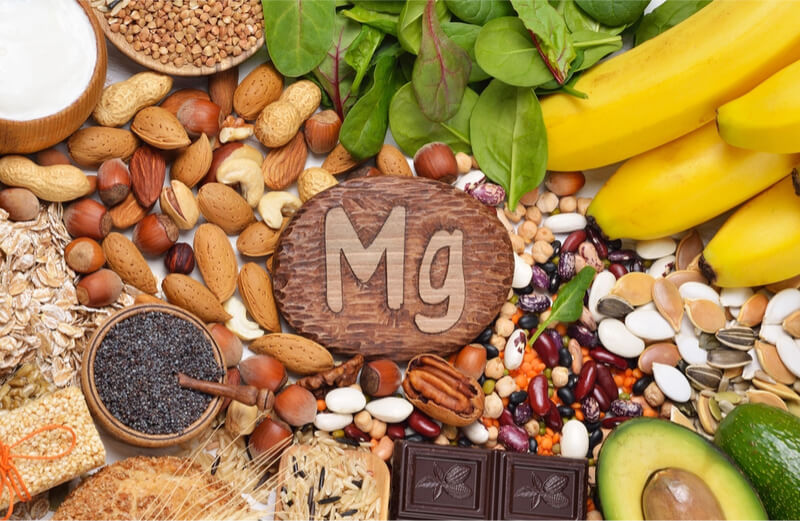Magnesium is a crucial mineral for your body—especially on the Keto Zone Diet. Thankfully, with a little knowledge you can easily master your magnesium intake on the keto diet.
Why You Need Magnesium on Keto
Magnesium plays a part in many different bodily processes, including maintaining:
- Nerve and muscle function
- A healthy heart rhythm
- Strong immunity
- A regular sleep schedule
- Healthy testosterone levels
It also works with calcium to keep your bones healthy and helps with over hundreds of over bodily reactions, including generating and using ATP, the main source of energy in your body’s cells [1].
Many people don’t get enough magnesium, no matter their diet [2]. So, supplementation is often helpful. And there may sometimes be a greater need for magnesium on keto.
How Low Carb Affects Magnesium
When you first start a low-carb diet (within the first few weeks), your body usually loses a lot more water than usual. This is because you’re releasing stored glucose, also known as glycogen, which is one-part glycogen to three-parts water.
As your kidneys release this extra water, it can also cause a drop in your magnesium levels.
Magnesium Deficiency Symptoms
This drop in magnesium on keto along with other minerals may contribute to what’s known as the “keto flu” in some people (although taking Instant Ketones can help combat this by getting you into ketosis faster).
Symptoms of magnesium deficiency that are also common with keto flu may include:
- Muscle cramps or soreness
- Headaches
- Nausea
- Fatigue
- Heart palpitations
- Trouble sleeping
- Other flu-like symptoms
The good news is that there are actually many low carbohydrate foods high in magnesium! And for those who still need some help getting the recommended amount, supplementing with magnesium on keto is easy.
Magnesium and Keto: How Much to Get
So, how much magnesium do you actually need? For women over 30 years old, 320 mg per day is ideal while 420 mg per day is ideal for men over 30.
Normal serum levels of magnesium are between 0.75 mmol/L and 0.95 mmol/L [3]. Below 0.75 mmol/L is considered low. Although symptoms like fatigue and muscle cramps are often signs of low magnesium, blood testing is the best way to know for sure what your magnesium levels are.
Best Sources of Magnesium and How to Supplement
If you suspect you need magnesium on your keto diet, replenishing is it pretty easy and effective. First, let’s look some of the best low carb food sources of magnesium on keto and how much you can get in a serving:
Nuts and seeds
- Hemp seeds (1 oz): 170 mg
- Pumpkin seeds (1 oz): 150 mg
- Brazil nuts (1 oz): 104 mg
- Chia seeds (1 oz): 92 mg
- Cashews (1 oz): 82 mg
- Almonds (1 oz): 76 mg
Leafy Greens
- Kale (1 cup, raw): 31 mg
- Spinach (1 cup, raw): 24 mg
- Swiss chard (1 cup, raw): 29 mg
Fatty Fish
- Salmon (half of a fillet): 52 mg
- Sardines (1 can): 36 mg
- Mackerel (1 cup): 82 mg
Fats
- Dark chocolate (1 oz): 64 mg
- Avocado (1 medium): 58 mg
Other
- Tofu (3.5 oz): 53 mg (not typically recommended unless you eat vegan keto)
Besides eating these foods, supplementation is also common to cover your bases on the keto diet. You can take magnesium orally or transdermally (by spraying it on your skin).
Use a good source of oral magnesium, such as Living Chelated Magnesium (which provides 235 mg of elemental magnesium). Chelated is the best because it allows for more effective dosing.
Transdermal can also be effective for those with a lot of muscle soreness or cramping.
It’s also best to take magnesium with food.
Magnesium, like the other keto electrolytes, is a crucial part of any diet. Supplementing with magnesium on keto and eating plenty of keto-friendly magnesium-rich foods is the best way to ensure you get what you need.
Sources:
- https://www.ncbi.nlm.nih.gov/pubmed/7939385
- https://www.ncbi.nlm.nih.gov/pubmed/20736141?dopt=Abstract
- https://www.ncbi.nlm.nih.gov/pubmed/20736141?dopt=Abstract
More Articles From Drcolbert.com Find Out More About Dr.Colbert’s Health Services

Leave a Reply